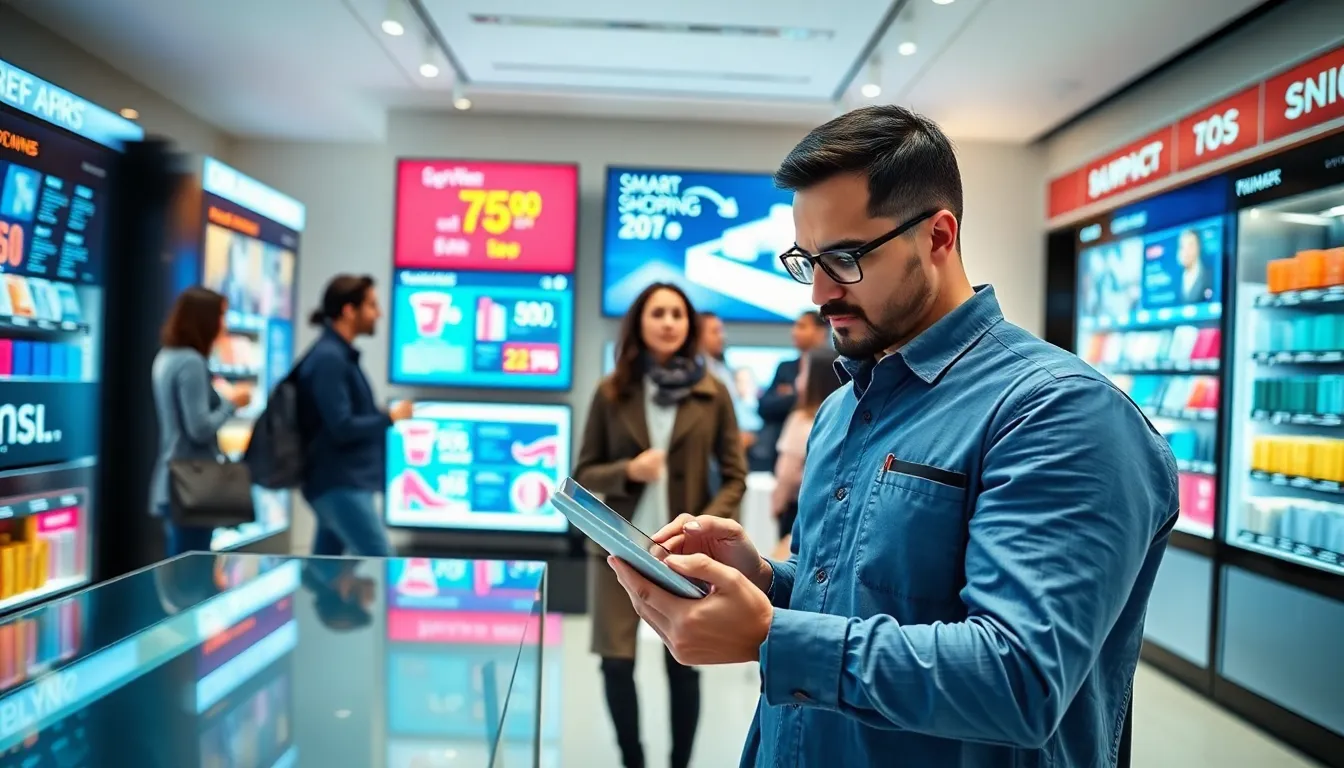Table of Contents
ToggleEver wandered through a store scratching your head, unable to find what you’re looking for? Welcome to smart shopping, where technology takes the wheeling and dealing into the 21st century. Imagine whipping out your phone, scanning a product to know its best price, or even being recommended items tailored just for you. Sounds futuristic, right? Well, it’s not. Smart shopping is here and undeniably transforming how people buy. Let’s jump into the specifics of this tech-savvy buying experience.
Understanding Smart Shopping

Smart shopping combines the convenience of technology with the instinctive habits of consumers. At its core, it’s not just about buying: it’s about making informed decisions based on data. This method leverages advanced algorithms, machine learning, and artificial intelligence to help shoppers find exactly what they need, often in record time. In short, smart shopping ensures you aren’t just purchasing a product: you’re making a savvy choice based on all available information.
How Smart Shopping Works
The mechanics behind smart shopping may sound complex, but they essentially revolve around simplicity and accessibility. First, users typically engage with platforms or apps that integrate artificial intelligence to analyze shopping habits, preferences, and even social media activity. When a user enters a query, these platforms swiftly sift through an ocean of products and options.
So, how does that look in real life? Picture this: you’re at home, contemplating a new coffee maker. You type in your preferences and suddenly, you have personalized recommendations popping up on your screen. Not only do you get links to the best deals, but you also find articles critiquing the products, actual user reviews, and even tips on how to use them effectively.
Benefits of Smart Shopping
Smart shopping isn’t just a trend: it’s becoming a game changer for consumers everywhere.
Key Features of Smart Shopping
- Personalized Recommendations: Forget random product suggestions. These platforms use your browsing history and preferences to suggest items you are likely to purchase.
- Price Comparison: Smart shopping brings the prices to you. Easily compare prices from multiple retailers in seconds, ensuring you get the best deal.
- Real-Time Alerts: Receive notifications about price drops or special promotions without having to keep track manually.
- Convenience: Shop whenever and wherever you want. Eliminate the need to stand in long lines or navigate crowded stores.
Comparison with Traditional Shopping Methods
Now, traditional shopping has its charm, nothing beats the feeling of exploring aisles, chatting with your favorite staff, or simply enjoying some retail therapy. But there’s a stark difference when it comes to efficiency.
Take a typical shopping trip: it involves planning, driving, navigating through potential crowds, and hoping the item is in stock. Smart shopping flips this model on its head. It provides users with everything they need in a streamlined manner. Plus, there’s no more worrying about finding the best deal, it’s done for you.
Challenges of Smart Shopping
Not everything about smart shopping is sunshine and rainbows, but. There are challenges that consumers face in this ever-evolving landscape.
One major concern is privacy. With so much reliance on data, users often worry about how their personal information is being utilized and whether it’s secure. Also, while algorithms are fantastic, they aren’t infallible. Sometimes they may suggest items that don’t fit the consumer’s needs, leading to frustration. Finally, many older generations may still prefer traditional methods and may take time to embrace this new shopping reality.
Future of Smart Shopping
The future of smart shopping is undeniably exciting. With advancements in technology, imagine augmented reality shopping experiences where users can visualize how products fit into their lives. AI-driven assistants might not only help with purchases but also provide unparalleled customer service with instant responses and personalized advice. Plus, as security improves, consumer trust in these platforms will likely grow, paving the path for even more innovation.
The integration of social media with shopping could also rise, creating a seamless experience where users can purchase items without leaving their favorite apps.





